Dozens of articles are published daily on the ultra-discussed topic of link building. Just try a simple search on Google with the “link building” query and most likely the “link building is dead” auto complete will show up.
From what we are concerned, link building is far from dead.
It would be arrogant to say link building (or even SEO) is exactly the same as it was a couple years ago. And it’s also true that the landscape of SEO and link building is always changing, but that doesn’t mean link building is dead and buried. What we think it actually means is that the importance of building high-quality white hat links has never been higher. “Can link building co-exist with Google Penguin updates?” one might ask. We believe that yes.
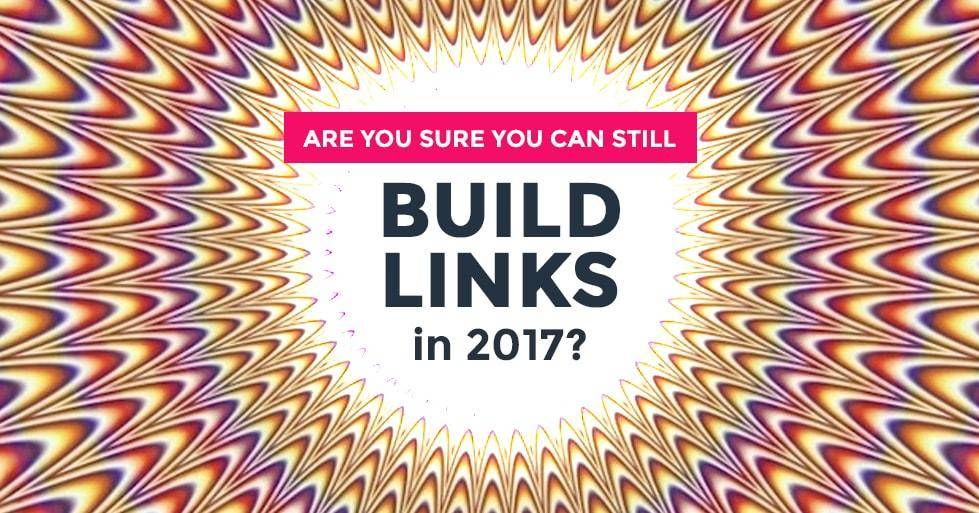
A proper understanding of the concept of link building in the current context is needed, of course. Yet, whether you are new to link building, or you have been doing it for a while, there might be some underused link building techniques that might help you to secure high quality links. And those are the exact tactics we are going to present to you in the following lines:
What’s Different About Penguin 4.0 ?
Earning the First Link
- Interview Experts/Influencers
- Link Bait
- Create Best in Class Content
- Build Free Tools
- Aggregate Data & Create Stats
White-Hat Link Influencing
- Identify Dead Businesses
- Send Handwritten Notes
- Link Reclamation Technique
- Brand Mentions Technique
- Target the ’Media Mentions’ Page
Monitoring Your KPIs
What’s Different About Penguin 4.0 ?
For a couple of years now, Google has got us used to its algorithm updates, whose aim is to catch spam link profiles as quickly as possible and to keep low-quality sites from ranking well in the search results. What you might not be familiar with is the concept of Real Time and Granular.
What that means exactly:
Real-time: Your site will be penalized in near real-time (if you get unnatural links) as well as recover from a penalty incredibly quickly (if you disavow or remove the bad links).
Granular: The Penguin algorithm will be able to devalue spam by adjusting ranking based on spam signals, rather than affecting the ranking of the whole site.
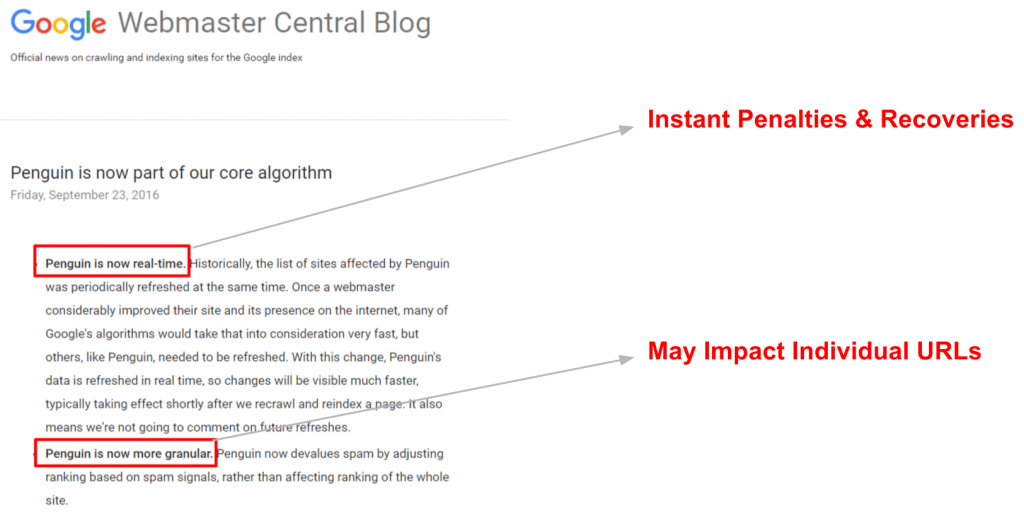
Step 1: Earning the First Link
The very first link might be the one you’ll have to work the hardest for.
It can be very frustrating, too – knowing that links give rise to links yet you’re yet to get your first one. But despite this knowledge, it is crucial that you earn that first link fair and square.
Do not beg for it, do not buy it, do not happen upon it.
Work hard for it and the reward will feel that much sweeter. This is not just some idealized notion of ethics, either. You need to be able to win that link and prove to yourself that you can do that. So how can you fight for the first white hat link?

Strategy #1 – Interview Experts/Influencers
You’re probably not an expert yet, otherwise people would already be flocking to hear what you have to say. But that doesn’t mean you cannot take advantage of the appeal of an expert. And the best thing is you can do that while also offering honest quality to your readers. It’s not disinterested, and it’s also not dishonest. But it’s a great deal to attract links.
That’s how most interviews work – we want to offer readers some insight, but also attract their attention.
Convincing an expert or an influencer to do an interview doesn’t have to be very difficult. Most of them are people who are just interested in getting their message across, so an opportunity to do that will more often than not be something they should be interested in. There are also so many ways of interacting nowadays which are just convenient that it would be a missed opportunity for them not to accept your invitation (even if you don’t have a large audience yet). And on top of that is an opportunity for you to start building relationships that will help you through the future.
They can reply to questions you wrote in an e-mail (if they don’t have enough time to answer all your questions at once or cannot agree on a schedule), appear on a podcast (if it’s easier for them to speak than write) or even meet with you in a face-to-face conversation (if they are old school or have a certain place to be and time to spend).
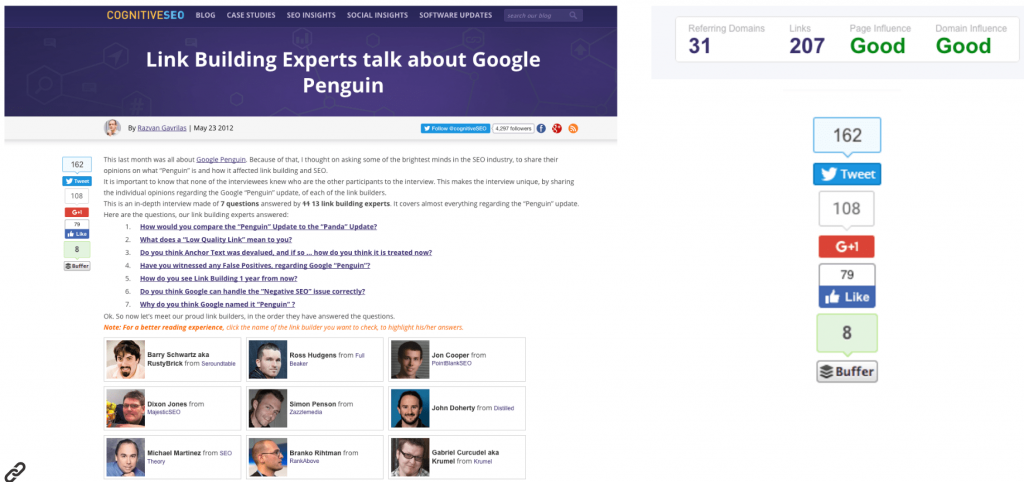
Of course, you can play around with the format any way you like and think it will make your interview stand out. You can have a round-table with several experts, or set-up a sort of a debate between two experts with differing viewpoints. Either of these could work out great regardless of the format (whether it’s in writing or audio form). As you can see in the screenshot above, we’ve compressed the expertise of renowned digital marketers into an article that brought not only social traction but also qualitative links. This search engine optimization strategy can help you improve your conversion rate.
Strategy # 2 – Link Bait
The word “bait” might sound a bit shady, but we’re not advocating anything that would be unethical.
We’re just highlighting that some content is more appealing than other.
Trendy subjects are more likely to be read than not-so-salient topics. Salience is not equal to importance, but has to do more with what’s on your audience’s mind at a certain time. Some things are always important, but what particular aspect about them is salient can change over time. For instance, we’re always talking about how to be Panda-proof, but if tomorrow a new release came out, we’d be talking more about that than usual.
Certain ways of structuring content are also more likely to attract interest than others.
The best example would be lists and rankings. They always tend to attract visitors and shares to a much larger extent than long-form articles. Charts and infographics tend to be more appealing (and easier to share) than text, regardless of how well-written the text is. As you can see in the example below, a smart & dynamic way of presenting content might make wonders.
Deep down we’re still very visually-oriented beings.
Seeing is believing and it requires less effort on our part to understand information. Reading requires an extra effort and a higher power of abstraction. We’re always going to be tempted to go the easier road.
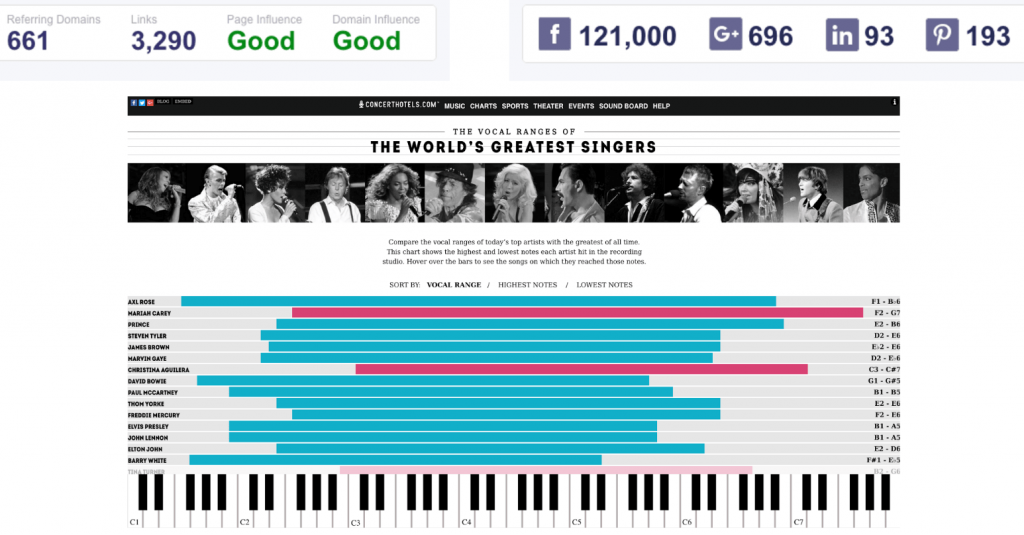
So how do you use this information?
Try to stay up-to-date on what people are interested in, what’s “hot” and what’s “not”.
Make a habit out of reading the news on a daily basis, even if you don’t always have an active interest in everything that’s out there. You need to get attuned to what your audience would like to read about, rather than what you’d like to share. Ideally they should always be the same, but when they’re not, it might be worth to side with your audience. Once you’ve settled on a subject, do a bit of additional research and come up with a new or interesting way to present the information. You don’t necessarily have to be a master designer. There are plenty of tools already out there and still new ways to combine them to come up with a catchy, innovative visualization of a topic.
Strategy #3 – Create Best in Class Content
This is taking things one step forward compared to the previous strategy. We’re not just talking presentation, but also content. For this, you’ll have to do quite a bit of research.
There are plenty of good articles out there on any given topic, but how many of them are really great?
To create a popular blog post, you should meet at least four criteria:
First of all, a piece of content should be comprehensive.
Of course, not all posts need to be user guides, but a wide perspective is always helpful. Even if you don’t expand on all opinions on a subject, simply touching on them can be a useful primer for most readers. It also makes sure that you stay relevant for a wide audience, so that your article is of interest even for users who know quite a bit about the topic.
A great article should also try to go in-depth.
Most people can find the surface info on their own, with a simple Google search, but it takes work to do several searches, read, curate and compile the relevant info and then present it in a neat package – and that’s where you come in. If you’re discussing SEO tactics, try go talk advantages and disadvantages for each, speculate about how difficult or easy it would be to implement, share from your own experience.
It’s also crucial that an article is up-to-date.
Sometimes the info is out there but it’s just not accurate anymore, or the examples are old and readers can’t relate to them, or there’s a new kid on the block disrupting the landscape – just think of statistics about Internet content and users and how quickly they become obsolete. Keeping up on the changes is hard work but someone’s got to do it, especially if they can attract views and shares in the process.
Last, but definitely not least, a great article is always easy to navigate.
This feature cannot be underestimated, since it’s what makes users feel like a huge amount of work has already been done for them. It’s also what makes the article shareable and what gets people to talk about it.
Here’s an example of a piece of content that meets the 4 criteria exposed above:
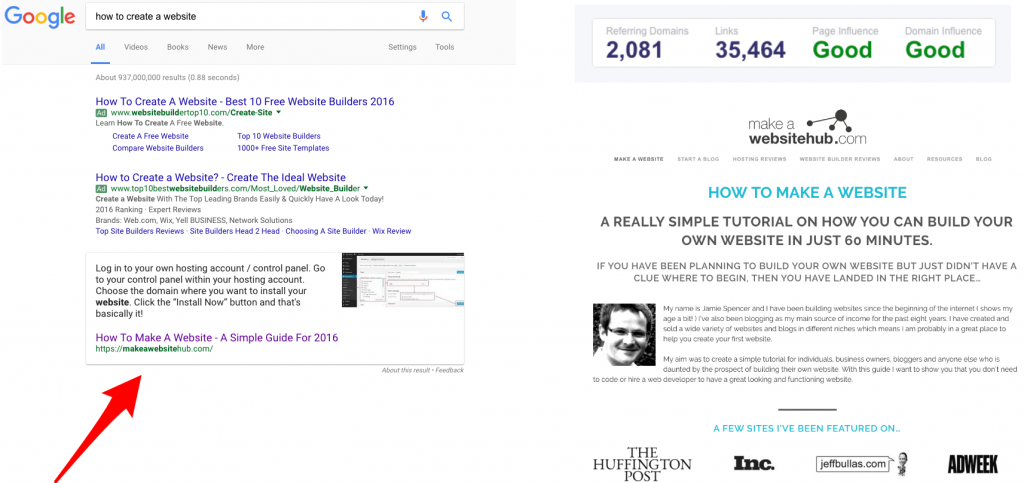
It’s responding to a ongoing need in a very comprehensive way and the results were impressive.
Strategy #4: Build Free Tools
We’re entering original content territory now. This is a very valuable strategy even if you don’t feel programming is your best strength. That’s because a lot of people tend to think of tools as complex pieces of software, which require a lot of time investment, both in creating them and in maintenance work. And that can definitely be the case with some tools. But those are not the only tools that are successful.
People will use tools for all sorts of tasks, even apparently simple ones, if it saves them some time or makes the task more appealing.
You need to look no further than the app market to understand that the concept of functionality is being stretched in all directions. Apps with a very narrow function are successful because they perform that function very well, sometimes even in the face of apps with more functions (which might be viewed as bulky).
So then why make your tool free as opposed to selling it?
Because you’re after a different kind of capital. What you’re after is known, being trusted and sought after. Once you’ve got those, you can move along to creating other tools which you can try to monetize. But that will only work if you first have the links.
For instance, in the screen below you can see an apparently commonplace, yet a very useful tool for calculating VAT in the UK. It’s free to use, it solves a problem and as people appreciated its use, they were willing to link it and sharing with others.

Strategy #5: Aggregate Data & Create Stats
This is not just about making information look good, but about creating that information in the first place.
We’re talking original research, a post that others might refer back to when creating their own articles.
It can be a very productive endeavor, but before you dive and hope you get a few good links out of it, you need to consider a few questions:
-
- What are you hoping to find? There might be a particular theory you’re interested in testing, or you might have a question where you’re not sure what the answer will be. Either way, you need to first formulate that question or theory, so that you know what data to get.
-
- Where can I get the data from? Some of the data that could be used for research could already be out there. Official reports, disparate statistics that can be put together or even data that you can easily pull from the web. Of course, most times, the most interesting and novel research might come from data that has never been put together before.
-
- What can I find out from the data? There is a delicate balance between applying statistical tools on your data to find out the answers to your questions and “fishing” for interesting results by mixing and matching any possible correlations within the data. Just because you can find a certain correlation in a mountain of data doesn’t mean that it’s real or relevant to your readers.
In the screenshot below you can see an example of a website that presents key findings on credits, card debts and other of interest topics from this area. People really enjoyed and used the info found here on further studies, articles, etc., which can be easily seen in the number of referring domains that this website has.
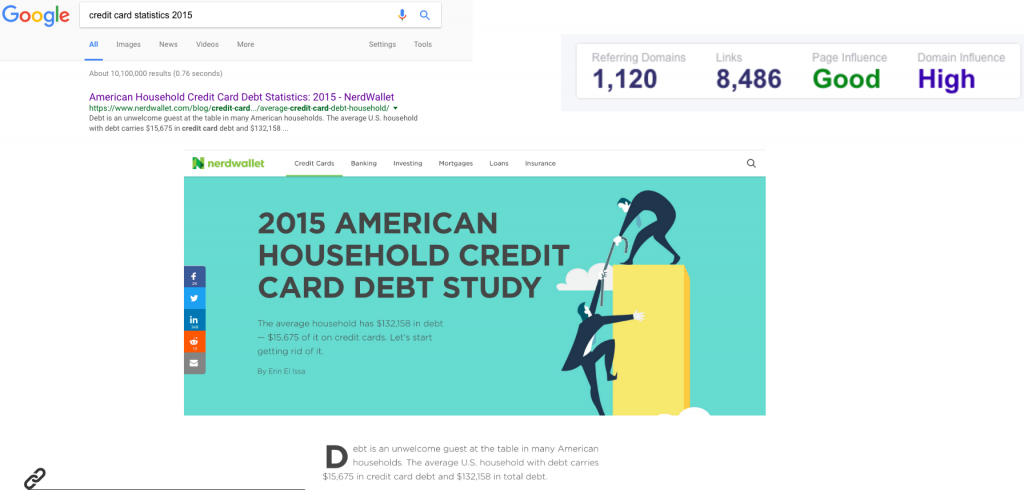
Step 2: White-Hat Link Influencing
When it comes to link schemes, as opposed to white-hat ones, Google is pretty straight forward: any links intended to manipulate PageRank or a site’s ranking in Google search results may be considered part of a link scheme and a violation of Google’s Webmaster Guidelines. This includes any behavior that manipulates links to your site or outgoing links from your site.
Therefore, the only types of links you should aim for are the white-hat ones. We’ve talked more about this subject in a previous post. Stay tuned as in the following lines we are going to develop some strategies on how to get white-hat links:
Strategy #1 – Identify Dead Businesses
We have touched on this before, but re-kindling “dead” pages is worth mentioning again, because it is a very lucrative white hat link building strategy. What does it involve? A few simple steps, really. Start with a local business and then extend your area of interest.
You need to identify a business that had an active page at some point but has since gone under.
Some of these pages might not even load, but luckily there are quite a few repositories of past online content out there (the Wayback Machine being only the more popular of them). The content that was there might still be largely useful and relevant to a particular audience.
After identifying such a website and closely inspect its links, you might be interested in acquiring that “dead business” and get fully advantage of those referring domains that are wasted out there.
In the screenshot below you can see an example of a website that is not live (or at least it wasn’t in the mid of January 2017 ) but has tons of links on competitive anchor text. If I were in the shoes business, I would definitely take this website under my radar.
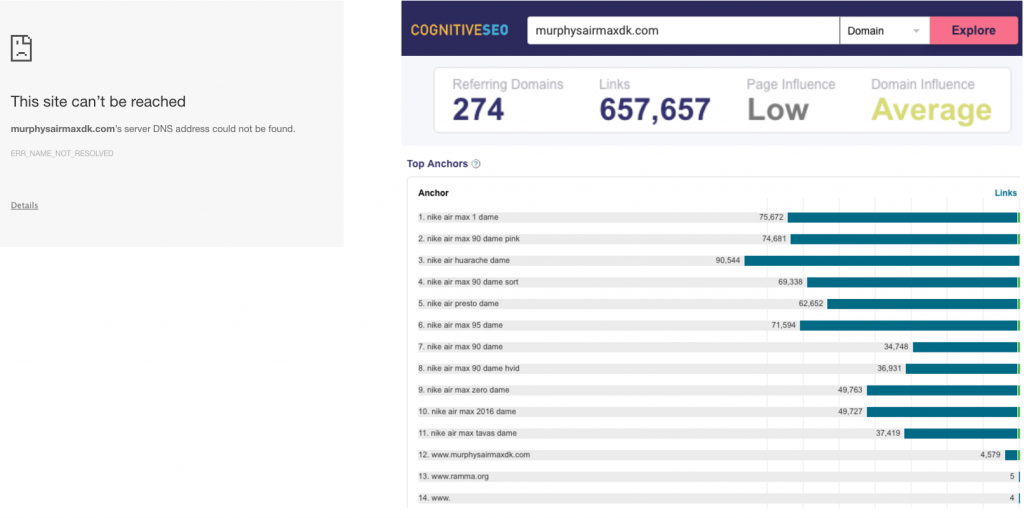
Strategy #2 – Send Handwritten Notes
You may have stumbled upon this before and thought “Not with my handwriting!” or “That sounds very time consuming and not at all useful.” But here’s why it might just work.
Handwriting already seems like a thing from a bygone age, like vinyl discs, or film cameras. But like with most things gone vintage, there is a strong case for a comeback, in the shape of a luxury commodity.
There are times, such as when you get a new customer, or celebrate a milestone or anniversary, when a handwritten message can really drive the point home.
It’s showing that you care and value someone enough that you are willing to spend extra time and effort to make them feel special. And that action solely is very likely to bring you an extra high quality link.
But what if I have to send hundreds or even thousands of letters? Surely that would take forever. Luckily, there are several services out there that do exactly that (and do it quite well; some examples: Bond.co, LetterFriend, etc.. Is it a bit of a cheat? Sure. Does it still have a better impact than good old Times New Roman and might get you links? You bet.
Strategy #3 – Link Reclamation Technique
Of all the possible link building and generally SEO tactics, this might be the least selfish, as it ends up giving something back to the web community.
And let me show you why.
Identifying the broken pages of any website has a lot of benefits and I think you already knew that. Yet, what you might not be aware of is that you can transform the broken page identification in a link building technique. Long story short, you can identify & recover lost link equity using the linked 404 pages on a site.
How? Quite simply. Firstly, run the website you are interested in within the Site Explorer and you will immediately be listed with all the broken pages that site has. As you can see in the screenshot below, broken pages are something common for all type of websites, be it big or small, be it Microsoft or the neighborhood grocery’s website.
OK, you might say, but how can this technique help me with my link building campaign?
Well, you can always go further and take a look at what your competitors are doing. There is a chance they have a lot of broken pages and therefore, a lot of links associated with those pages. And all these can be translated into great link building opportunities or you. No one can stop you from digging deeper, finding those broken links, recreating that broken content, and replacing broken links with your corrected link.
Allow me to detail how this technique works in 3 (not simple but effective) steps:
-
- First, you need to find those broken pages and links. And before imagining a huge amount of work that comes with this task, let me remind you that half of your job is done as you can instantly see all the Broken Pages. You will also be informed about the number of links each broken page has.
-
- Then, update or recreate the content of the website the broken link originally led to. If there are other broken pages and not your own you are analyzing, you can even include your own site in the alternatives. Archives such as Wayback Machine or Warrick can help you to recover the original content (which you can improve on, of course).
-
- Last and not less importantly, you can contact the webmaster who has the broken link on his/her site and recommend your alternative (quite a bit of outreaching and networking is involved here). The more you can come off as acting in good-faith and interact as a real human (as opposed to a SEO-churning bot), the higher the chance of success.
It’s a win-win situation: the users get an updated version of the quality content they were looking for, you get links and potential shares. All for a bit of work that involves (re)search (for relevant dead pages), curating (of existing information) and editing (of the updated information)
#4 – Brand Mentions Technique
We all want to earn or create more and better links. And in our pursuit of doing so, we may overlook some tactics that are just in front of us. And one of these techniques is making use of web mentions. There have been some interesting articles written on the importance of mentions in ranking and there has even circulated the idea that mentions could be the future of link building. That is a topic which is still debatable but one thing is sure: mentions can help us within the link building strategy as we can take advantage of those brand mentions without links.
Sounds quite easy, right? Find your brand mentions that don’t have links, transform them into linked mentions and the job is done. Yet, thousands of pages are created every day on the web. And from this never ending sea of content you need to find where and when you are mentioned. Moreover, you want to find those web mentions that don’t have a link to your website; mentions that represent link opportunities for you. This begins to sound more like Mission Impossible than an effortless task.
However, like in many other situations in digital marketing, having the right tools at your disposal will save you an unimaginable amount of time. And in the quest of finding unlinked mentions, BrandMentions comes to help.
And, as it’s said that there is something magical about number 3, we are going to sum up the efforts from the brand mention technique that you’ve seen in the screenshot above in 3 steps:
-
- Firstly, you need to create an alert so that you will be notified every time your brand is mentioned anywhere, anytime on the web. It’s the easiest way of monitoring your business and always be aware about what is said about you out there.
-
- Secondly, after you’ve checked out all your brand alerts, try identifying the authors that mentioned your brand but did not link to your website. After identifying the authors, we personally prefer LinkedIn when it comes to getting in touch with them but you can choose any sort of communication you are familiar with or work for you.
-
- The last step (that can be the first step in the beginning of a beautiful friendship) is sending a message to the author with many thanks for the mention and with the request of adding a link to the mention. This way, you can obtain a high-quality link and potentially gain a long-term relationship.
Strategy #5 – Target the ’Media Mentions’ Page
Anytime we are crafting a piece of content, we do it having something in mind. Sometimes we want to highlight a great feature of our product, sometimes we want to share an opinion or a finding or we might as well be very outraged about something and we want to share our anger with our readers. Whatever the case might be, whenever you are working on a piece of content, it would be bad if you had in mind the media mention page. We know it might sound difficult to make targeting the media pages a goal in itself, yet it might do you well in terms of link building.
Take a look at the example below. barnimages.com/resources is a great place for linking without big efforts implied.
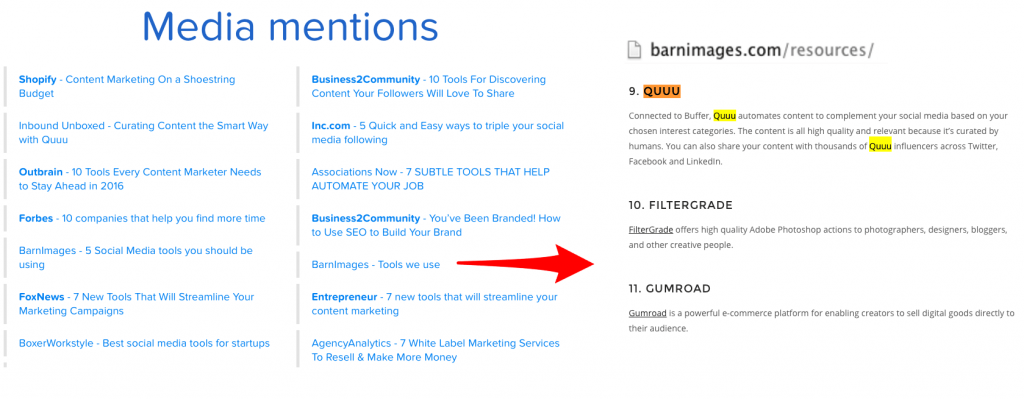
Monitoring Your KPIs
I know that some of you might not be a big fun of this part of the job, where you need to draw the line and see how your business is standing after all the efforts you’ve invested, yet it’s a highly important section.
Monitoring your Key Performance Indicator (KPI) evaluates the success of your strategy and is of great help when shaping the approach your next campaign.
There are many elements you should constantly look at when it comes to link building campaigns. Below we are going to present you the top 3 you should always keep an eye on.
#1 – SEO Visibility
Every time you’re trying to figure out what has happened to a certain website, the first chart you should look at is the SEO Visibility one. Because just by taking a glance at this chart you can see whether there are significant downhills caused (probably) by Google updates or whether that site’s online visibility is stable and doesn’t have dramatic ups and downs.
SEO visibility is essentially about monitoring the search performance of a website as it presents the historical development of a domain’s visibility in Google. It has 2 components, search volume and the position of the ranking keywords. It basically reflects how often a website shows up in the search results and is calculated based on millions of keywords that are tracked in Google, their importance and traffic volume.
For instance, just by taking a look at the screenshot above I can tell how producthunt.com is doing in therms of SEO Visibility. Moreover, I can see their historical data and I can correlate their ups and downs with Google’s algorithm updates.
The SEO Visibility chart is the one you should look at before starting your link building campaign, after you’re done with it and in between. In other words, all the time. Why are we such big fans of the SEO Visibility?
It’s probably the only chart that can help you identify historic google penalties for any site, analyze competitors and compare yourself and also watch for future problems.
#2 – Link Acquisition Speed
So you’ve run a link building campaign and you want to check the results. And what you’re probably praying for are dozens if not thousands of links achieved in a very short period of time. Well, this might not be exactly helpful if you are still aiming for a natural link profile.
As we are looking at the screenshot below, we can see the number of new and lost links acquired on a daily basis. And this is great for monitoring. You should always keep an eye on all of your links, either new or lost, analyze them, manage them and most important, be aware of them.
Having a spike of links can be a reason of joy but also a warning sign at the same time. Where are all those links coming from? Why are there 12k links in one day coming from only 2 referring domains? Does my link acquisition speed look steady, consistent and natural, etc.? These are just some of the questions you should address yourself when checking your newly acquired links.
#3 – Penalty Risk Monitoring
We cannot emphasize enough how ongoing unnatural link monitoring is a necessity with the latest Google Penguin 4.0. Constantly keep an eye on your backlink profile. And, when running a link building campaign, the monitoring necessity is even higher.
Manually checking ALL of your links and identifying the unnatural links might take you way more time than you have available to invest in this matter. And even if you were willing to invest all the energy it takes, with Penguin always evolving, time might not be in your favor.
As soon as Google discovers that some links are shady, it will instantly penalize the website involved.
This is why we recommend you using a specialized tool for this matter. That doesn’t mean that your job is over in this area but it definitely eases your work. Check out for unnatural and suspect links, create alerts so that you can be notified in real time once “not Google friendly” links are connected with your website, browse through all of your links and disavow the ones you consider harmful to your website.
With the hope that this link building tactic will bring you the results you are hoping for, we would be more than happy to hear about your experience on this matter. At the end of this post you will find the techniques detailed above summed up in a Slide Share presentation. If you feel like some link building tips and techniques aren’t for you, we say try them anyway. At best, you will add some awesome high quality links to your arsenal. At worst, you will have tried something different and learned more about SEO and running a business in general.
We’d be happy to hear from you about your experience either way.

 Site Explorer
Site Explorer Keyword tool
Keyword tool Google Algorithm Changes
Google Algorithm Changes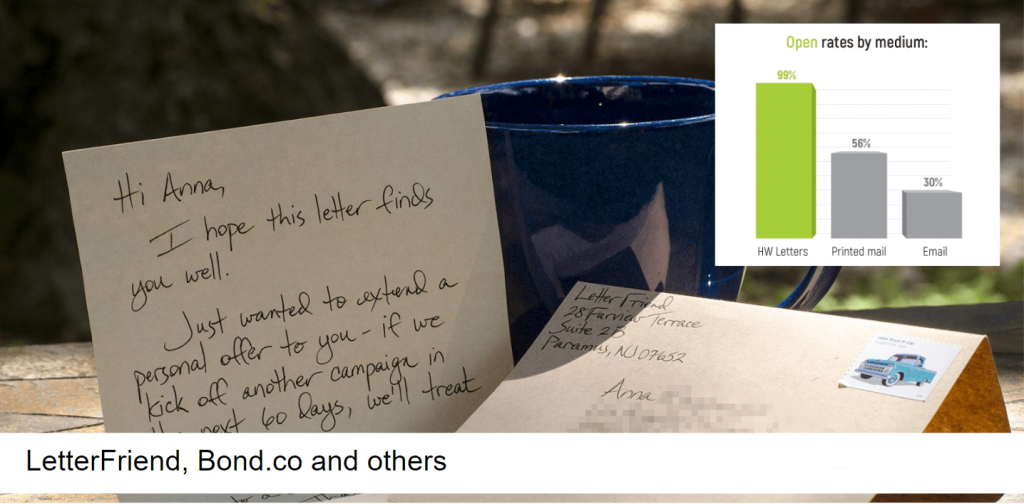
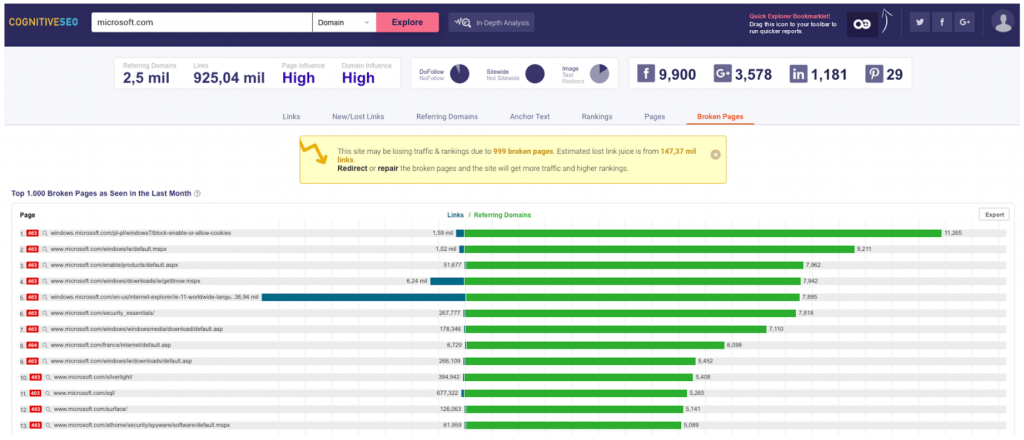
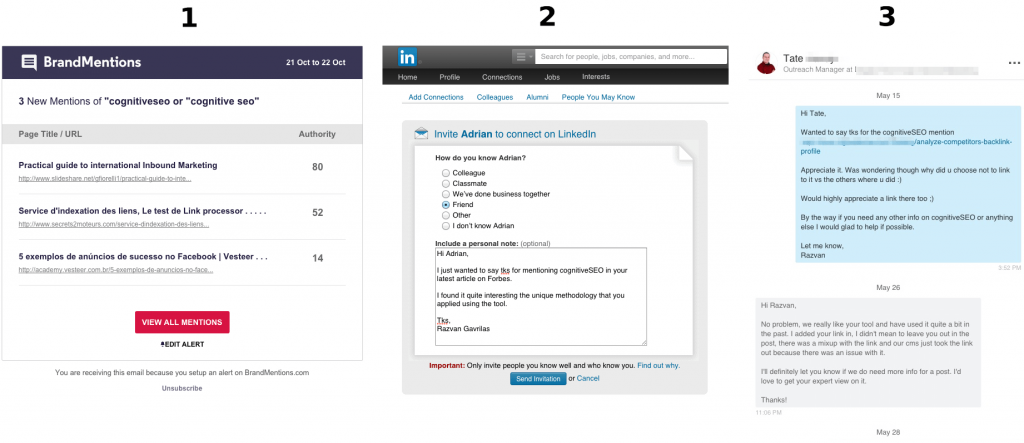
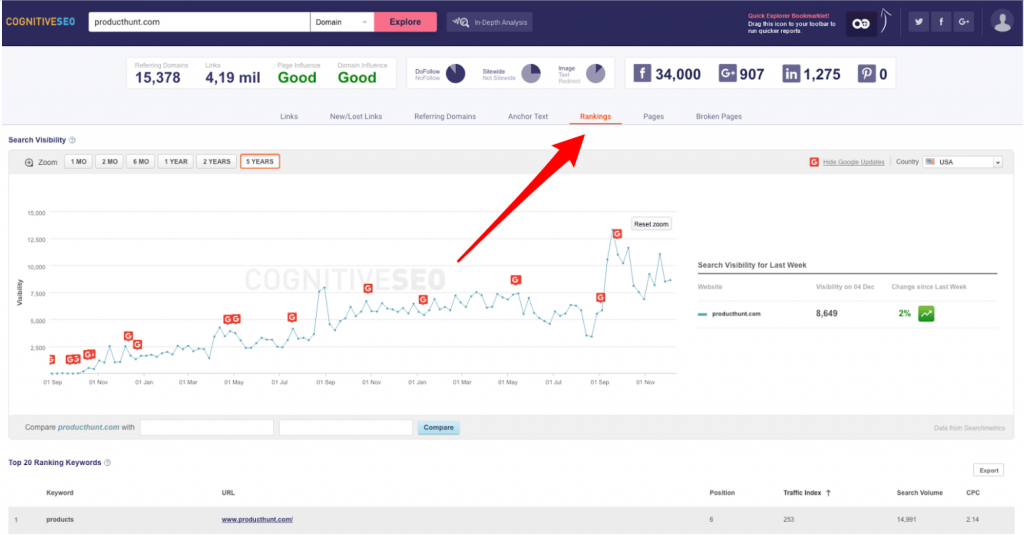
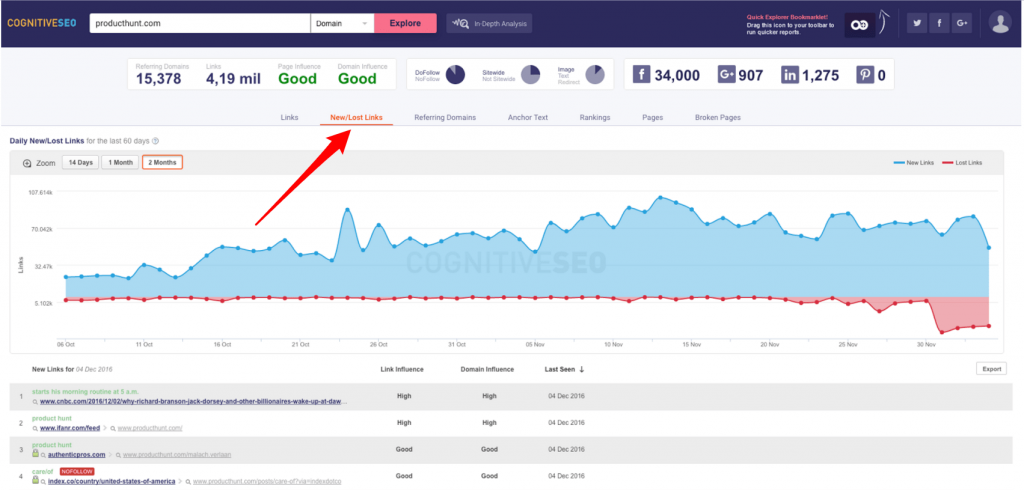
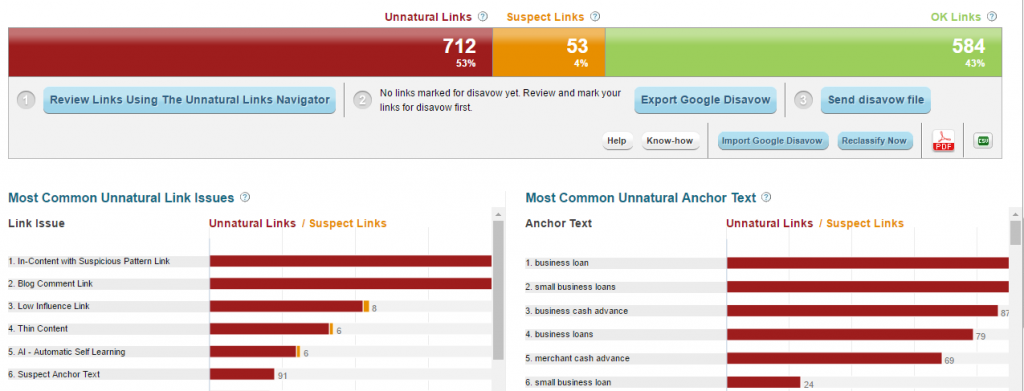


Really enjoyable article, but one thing that stood out for me:
Strategy #1 – Identify Dead Businesses
I understand this fully, but on one hand you say to avoid unnatural link building but on the other buy up websites that look like they have been dabbling in over optimised links?
I would avoid buying a domain like the one you mention unless you have the time to clean it up, which as you know, takes time.
On another point:
#3 – Penalty Risk Monitoring
I could not agree with this more.
With real time penguin, keeping on top the link profile is crucial.
Again, great article.
Glad you enjoyed the article, Ian!
regarding your questions:
Penalty risk monitoring is highly important indeed and we cannot stress enough on this matter. This is why, when applying the strategy regarding dead business identification also implies checking out their links, their authority, clean it up of it’s the case, etc. Indeed, this might take time but the investment might pay off.
Thanks once again for sharing your opinion with us 🙂
Very useful content Cornelia. I already watched your webinar. Thanks for the sharing Again.
Really happy you found it useful, both the article and the webinar.
Useful article, thanks for sharing it. A comment about the Strategy #4: Build Free Tools: if a commercial keyoword is used as an anchor text for the link that will exist in the free tool then this is not considered as a safe linkbuilding strategy. Although, at least in Greece, I haven’t noticed any Google penalty about it, Google has stated clearly that this is not a safe linkbuilding strategy.
Thanks for appreciation and for the input, Stephanos! I think it all depends on how you make use of the keywords and links, be it branded or commercial. Indeed, extra caution is needed for all the techniques to be sure you are on the safe side.
Useful information, great and valuable article!
Sometimes happen to achieve unwanted links, or to lose some that are very valuable for you. On your platform do you have a live link scanner that can notice you (through an email) about new or lost links?
Glad you found the info useful, Marius! Yes, within cognitiveSEO you have the possibility to set new or lost links alerts so that you can stay 24/7 connected.
useful content for new digital marketing strategy.
thanks.
Glad you like it and good luck with the implementation 😉
Building must-link-to resources is the key to your first links. This puts you in the circle of influence because you have something valuable to offer.
Thanks for this guide I agree you got to earn the links
Thanks Cornelia for this great post. I agree with almost everything you covered. SEO journey should be natural otherwise you can get luck today with some blackhat link building strategies but eventually, when you are already used to the top spot, google will hit you hard.
Indeed, Matt. A “natural” strategy is what we should aim to. 😉
Great article and i really enjoyed reading. Keep up the good work 🙂
Thanks, Gerard!
This such an outstanding guide for link building, thanks for updating,. I want to know do links from high PA works? (Even when it is commenting)
I love the “Strategy #2 – Send Handwritten Notes” that you said, I am traditional guy 🙂
I am happy that you didn’t say “write original quality content and the other websites will put a link to you” like most of the “theoretical marketers” says 😛
Wow! What a resource to learn link building.
You must’ve done some extensive research to develop this resource. Thanks a lot ?
Hi!
Thanks for this detailed guide on link building. I learned many new things from this post. And keep publishing more such valuable content for beginner bloggers.
Thanks for writing such a good article on backlinks . It is not only bendy in backlinks . People always try direct method but most of time these trick don’t works. Your tips are helpful for the person to make good backlinks.
Thanks